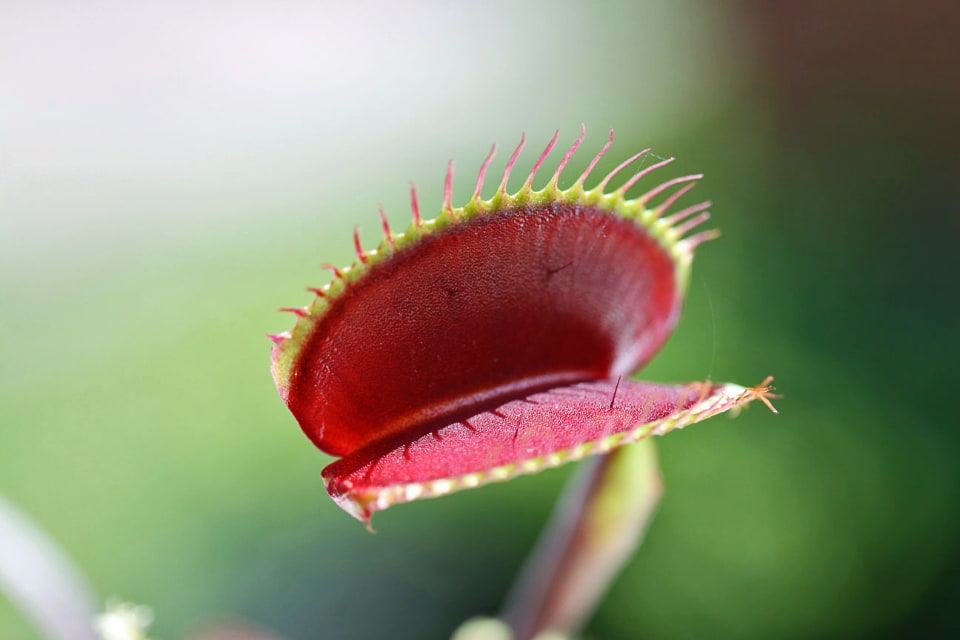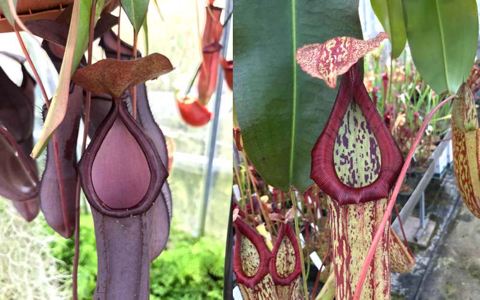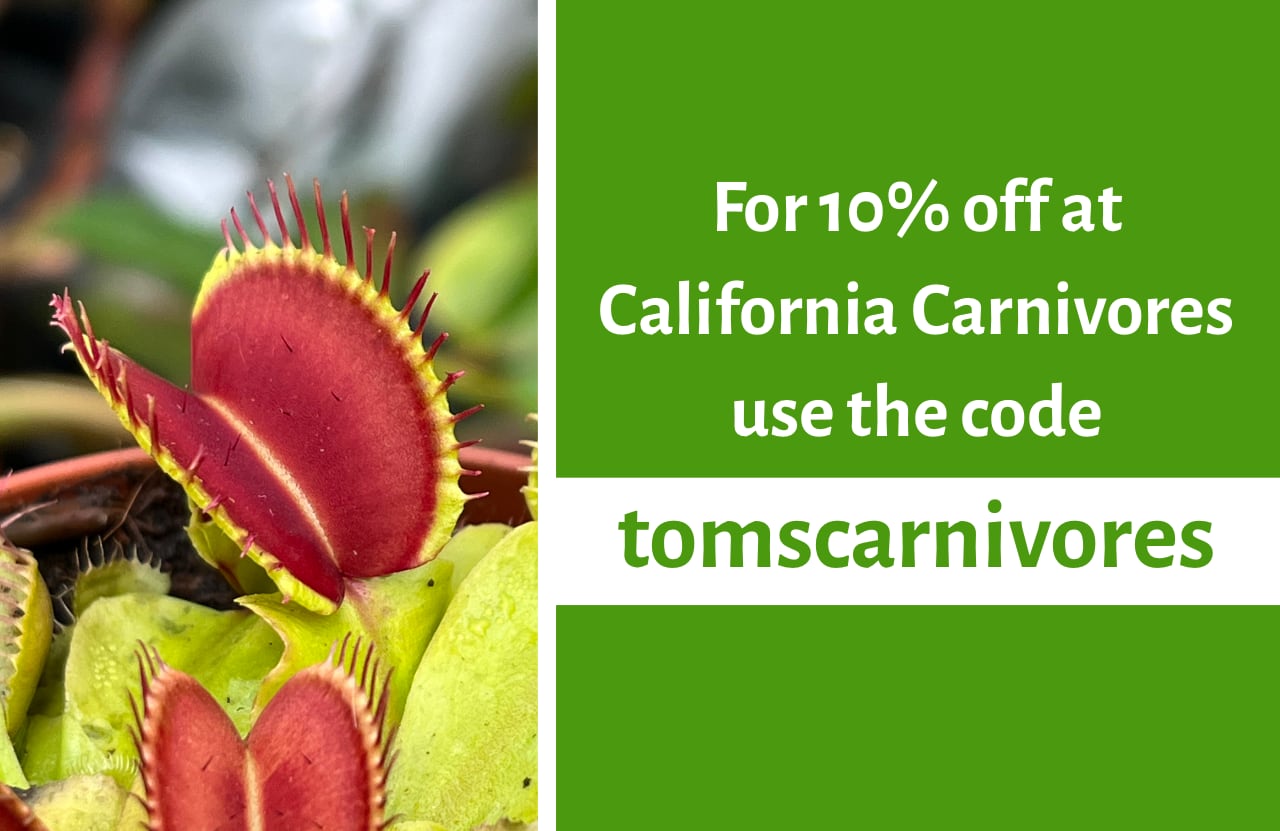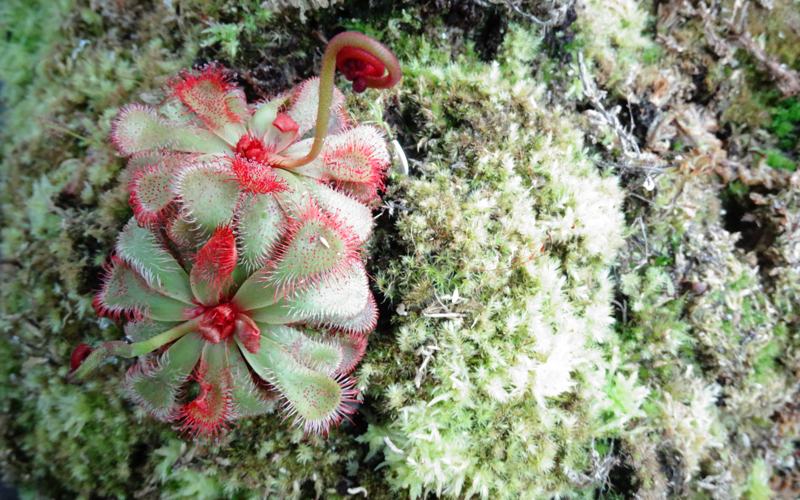
Gallery: Carnivorous Plants at Birmingham Botanical Gardens
Published 14 July 2017, updated
Birmingham Botanical Gardens first opened its doors on June 11, 1832, but exactly how long carnivorous plants have been exhibited there is not known.
It’s likely that the old Tropical House - open since 1852 - once held a collection of Nepenthes pitcher plants, which were a popular spectacle among horticulturists in Victorian England. Today, though, the Gardens’ carnivorous collection is to be found in the Subtropical House; built in 1871, this glasshouse has probably displayed carnivorous plants in some capacity ever since.
The current display was built over 25 years ago and recently underwent a thorough renovation. Wyl Durrant, a horticulturist at the Gardens, led the project and now helps to maintain the display, which he describes as having been in a “sorry state” prior to the work. “The staging was deteriorating, the plant selection was limited, and the whole area was overrun with heathers, ferns, and other bog loving plants.”
As part of the renovation, all unlabelled stock was destroyed and the remaining plants were reorganised. The staging was completely redesigned and the team incorporated a low-tech irrigration system - effectively a supersized tray technique. “Whilst we got the basic layout of the soft landscaping in place, I started to improve and diversify the collection,” explains Wyl. “My main aim wasn’t just to create an area which has a strong educational value, but also to create an area where people stopped and saw how beautiful they are as well.”
Article continues below.
Photo Showcase
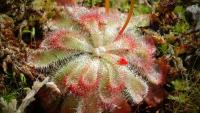 Carnivorous plant display at the Birmingham Botanical Gardens
Carnivorous plant display at the Birmingham Botanical Gardens
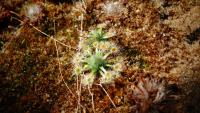 Carnivorous plant display at the Birmingham Botanical Gardens
Carnivorous plant display at the Birmingham Botanical Gardens
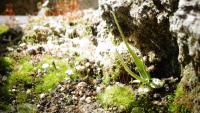 Carnivorous plant display at the Birmingham Botanical Gardens
Carnivorous plant display at the Birmingham Botanical Gardens
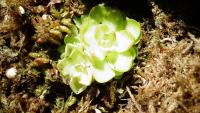 Carnivorous plant display at the Birmingham Botanical Gardens
Carnivorous plant display at the Birmingham Botanical Gardens
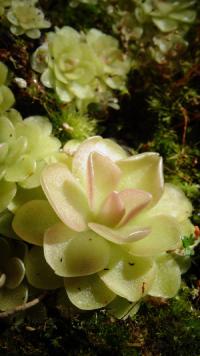 Carnivorous plant display at the Birmingham Botanical Gardens
Carnivorous plant display at the Birmingham Botanical Gardens
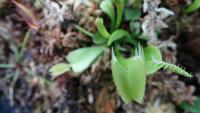 Carnivorous plant display at the Birmingham Botanical Gardens
Carnivorous plant display at the Birmingham Botanical Gardens
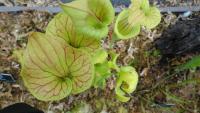 Carnivorous plant display at the Birmingham Botanical Gardens
Carnivorous plant display at the Birmingham Botanical Gardens
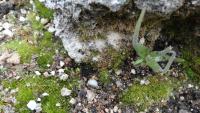 Carnivorous plant display at the Birmingham Botanical Gardens
Carnivorous plant display at the Birmingham Botanical Gardens
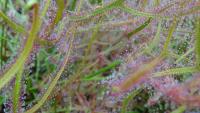 Carnivorous plant display at the Birmingham Botanical Gardens
Carnivorous plant display at the Birmingham Botanical Gardens
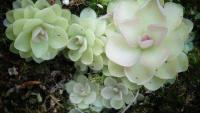 Carnivorous plant display at the Birmingham Botanical Gardens
Carnivorous plant display at the Birmingham Botanical Gardens
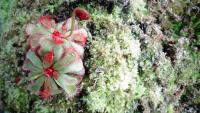 Carnivorous plant display at the Birmingham Botanical Gardens
Carnivorous plant display at the Birmingham Botanical Gardens
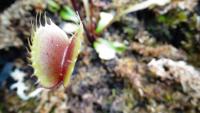 Carnivorous plant display at the Birmingham Botanical Gardens
Carnivorous plant display at the Birmingham Botanical Gardens
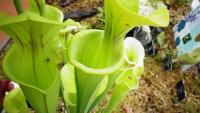 Carnivorous plant display at the Birmingham Botanical Gardens
Carnivorous plant display at the Birmingham Botanical Gardens
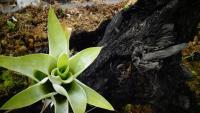 Carnivorous plant display at the Birmingham Botanical Gardens
Carnivorous plant display at the Birmingham Botanical Gardens
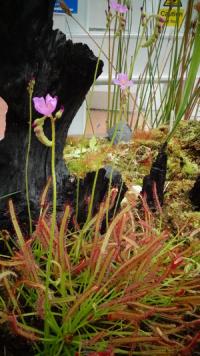 Carnivorous plant display at the Birmingham Botanical Gardens
Carnivorous plant display at the Birmingham Botanical Gardens
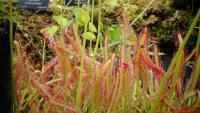 Carnivorous plant display at the Birmingham Botanical Gardens
Carnivorous plant display at the Birmingham Botanical Gardens
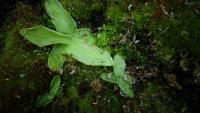 Carnivorous plant display at the Birmingham Botanical Gardens
Carnivorous plant display at the Birmingham Botanical Gardens
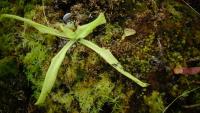 Carnivorous plant display at the Birmingham Botanical Gardens
Carnivorous plant display at the Birmingham Botanical Gardens
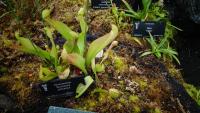 Carnivorous plant display at the Birmingham Botanical Gardens
Carnivorous plant display at the Birmingham Botanical Gardens
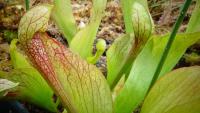 Carnivorous plant display at the Birmingham Botanical Gardens
Carnivorous plant display at the Birmingham Botanical Gardens
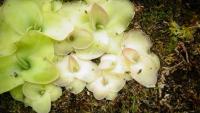 Carnivorous plant display at the Birmingham Botanical Gardens
Carnivorous plant display at the Birmingham Botanical Gardens
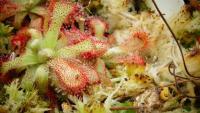 Carnivorous plant display at the Birmingham Botanical Gardens
Carnivorous plant display at the Birmingham Botanical Gardens
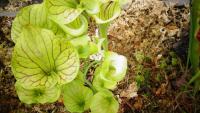 Carnivorous plant display at the Birmingham Botanical Gardens
Carnivorous plant display at the Birmingham Botanical Gardens
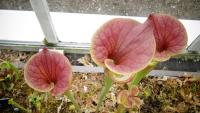 Carnivorous plant display at the Birmingham Botanical Gardens
Carnivorous plant display at the Birmingham Botanical Gardens
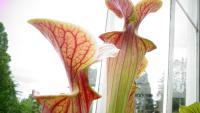 Carnivorous plant display at the Birmingham Botanical Gardens
Carnivorous plant display at the Birmingham Botanical Gardens
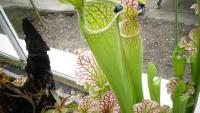 Carnivorous plant display at the Birmingham Botanical Gardens
Carnivorous plant display at the Birmingham Botanical Gardens
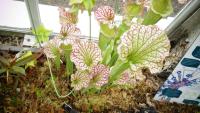 Carnivorous plant display at the Birmingham Botanical Gardens
Carnivorous plant display at the Birmingham Botanical Gardens
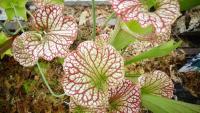 Carnivorous plant display at the Birmingham Botanical Gardens
Carnivorous plant display at the Birmingham Botanical Gardens
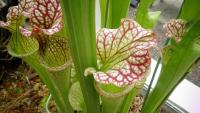 Carnivorous plant display at the Birmingham Botanical Gardens
Carnivorous plant display at the Birmingham Botanical Gardens
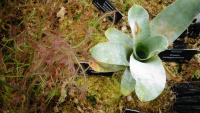 Carnivorous plant display at the Birmingham Botanical Gardens
Carnivorous plant display at the Birmingham Botanical Gardens
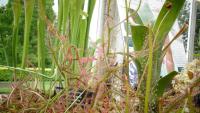 Carnivorous plant display at the Birmingham Botanical Gardens
Carnivorous plant display at the Birmingham Botanical Gardens
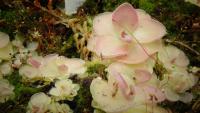 Carnivorous plant display at the Birmingham Botanical Gardens
Carnivorous plant display at the Birmingham Botanical Gardens
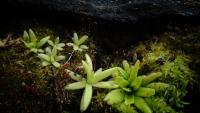 Carnivorous plant display at the Birmingham Botanical Gardens
Carnivorous plant display at the Birmingham Botanical Gardens
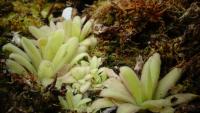 Carnivorous plant display at the Birmingham Botanical Gardens
Carnivorous plant display at the Birmingham Botanical Gardens
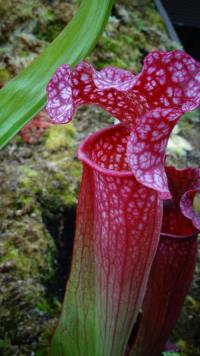 Carnivorous plant display at the Birmingham Botanical Gardens
Carnivorous plant display at the Birmingham Botanical Gardens
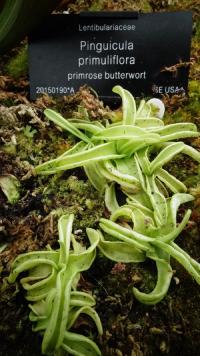 Carnivorous plant display at the Birmingham Botanical Gardens
Carnivorous plant display at the Birmingham Botanical Gardens
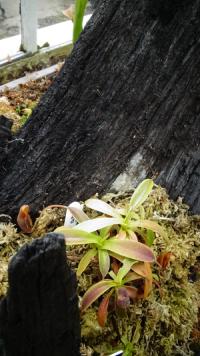 Carnivorous plant display at the Birmingham Botanical Gardens
Carnivorous plant display at the Birmingham Botanical Gardens
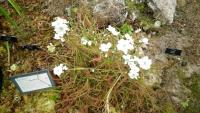 Carnivorous plant display at the Birmingham Botanical Gardens
Carnivorous plant display at the Birmingham Botanical Gardens
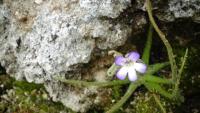 Carnivorous plant display at the Birmingham Botanical Gardens
Carnivorous plant display at the Birmingham Botanical Gardens
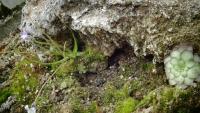 Carnivorous plant display at the Birmingham Botanical Gardens
Carnivorous plant display at the Birmingham Botanical Gardens
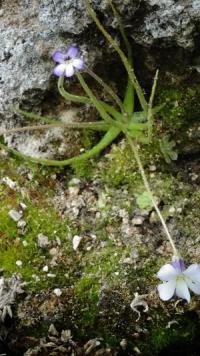 Carnivorous plant display at the Birmingham Botanical Gardens
Carnivorous plant display at the Birmingham Botanical Gardens
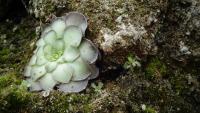 Carnivorous plant display at the Birmingham Botanical Gardens
Carnivorous plant display at the Birmingham Botanical Gardens
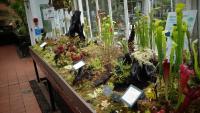 Carnivorous plant display at the Birmingham Botanical Gardens
Carnivorous plant display at the Birmingham Botanical Gardens
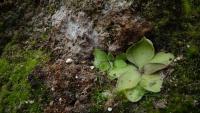 Carnivorous plant display at the Birmingham Botanical Gardens
Carnivorous plant display at the Birmingham Botanical Gardens
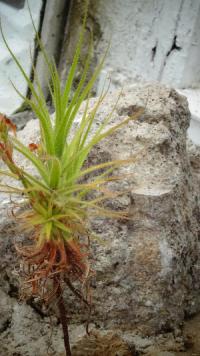 Carnivorous plant display at the Birmingham Botanical Gardens
Carnivorous plant display at the Birmingham Botanical Gardens
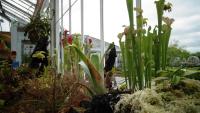 Carnivorous plant display at the Birmingham Botanical Gardens
Carnivorous plant display at the Birmingham Botanical Gardens
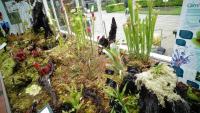 Carnivorous plant display at the Birmingham Botanical Gardens
Carnivorous plant display at the Birmingham Botanical Gardens
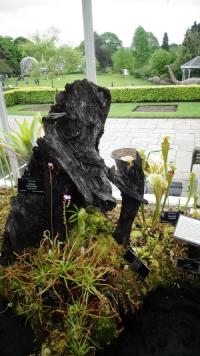 Carnivorous plant display at the Birmingham Botanical Gardens
Carnivorous plant display at the Birmingham Botanical Gardens
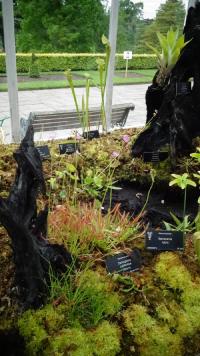 Carnivorous plant display at the Birmingham Botanical Gardens
Carnivorous plant display at the Birmingham Botanical Gardens
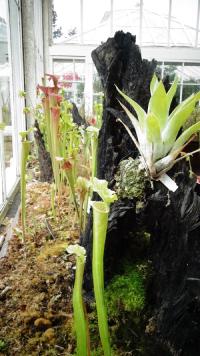 Carnivorous plant display at the Birmingham Botanical Gardens
Carnivorous plant display at the Birmingham Botanical Gardens
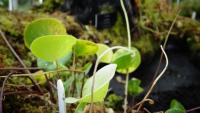 Carnivorous plant display at the Birmingham Botanical Gardens
Carnivorous plant display at the Birmingham Botanical Gardens
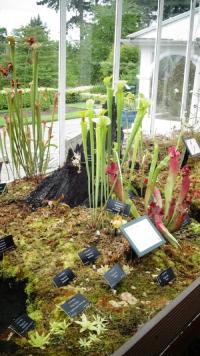 Carnivorous plant display at the Birmingham Botanical Gardens
Carnivorous plant display at the Birmingham Botanical Gardens
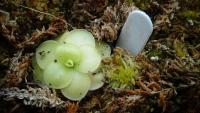 Carnivorous plant display at the Birmingham Botanical Gardens
Carnivorous plant display at the Birmingham Botanical Gardens
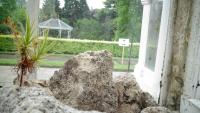 Carnivorous plant display at the Birmingham Botanical Gardens
Carnivorous plant display at the Birmingham Botanical Gardens
“Wayne Williams - the glasshouse manager - supported me massively through the entire renovation, and my descent into carnivorous plant obsession!” says Wyl. Indeed, the collection has expanded dramatically: it previously comprised 4 genera and around 30 species, and now boasts at least one species of almost all carnivorous genera. Only Aldrovanda and Triphyophyllum are absent, and new specimens are continually being added.
The popularity of the new display is actually one of the biggest challenges faced by Wyl and the team; such is the appeal of carnivorous plants, the specimens on display are constantly being touched, prodded and force fed. “I’m very proud that my display has such a positive impact on people,” says Wyl, “but on the flip side, humans also form the main pest for the display… private collectors will love that the main problem with public displays are the public!”
To control the issue, Wyl uses what he calls “sacrificial plants” - these specimens endure the attention of curious visitors for as long as they can, being before removed and repotted into what you might call “rehab”. Aside from this, maintenance of the display is relatively light. “I cut dead, damaged or diseased material away and remove any ferns or other weeds that self-seed,” says Wyl. “Occasionally I also split and reduce some of the Drosera for containment. I take regular cutting, divisions and seed collections to bulk out the collection and to experiment with different media and propagation techniques.”
Some of these experiments with new techniques have been great successes. Most recently, Wyl has successfully propagated leaf pullings from Pinguicula heterophylla, and managed to get cuttings from several genera of Drosera (including Drosera madagascariensis) to take root in their test tubes.
Feedback on the display from carnivorous plant enthusiasts has been very positive. Wyl recalls that one such grower recently described it as the best carnivorous display they had ever seen in a botanical garden. Others have expressed jealousy at the collection, particularly after its extensive renovation!
On the weekend of the 16th & 17th September 2017, the Gardens are hosting a special Carnivorous Plant Event in collaboration with the CPS - details can be found here. Get directions and plan your visit here. Don’t miss it.
Many thanks to Wyl Durrant and Birmingham Botanical Gardens. The carnivorous display is a permanent feature in the Subtropical House, which is open all year round.
I've been growing carnivorous plants for over 2 decades, having been fascinated by these plants since I got my first Venus flytrap at age 10. I now have a large greenhouse to house my collection and am an avid breeder of Nepenthes pitcher plants.
- Next post: Gallery: Hampshire Carnivorous Plants Open Weekend
- Previous post: A look at the Nepenthes breeding program at Predatory Plants


